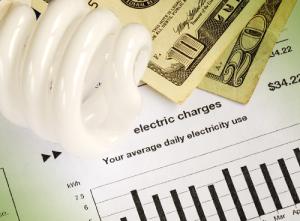Based on U.S. Commerce Department data released on November 30, Public Utilities Fortnightly’s Electric Bill Affordability Index for October was 1.32 percent, unchanged from September.

The Affordability Index for October was also exactly where the Affordability Index was for October of last year. That is, 1.32 percent for October 2023, and 1.32 percent as well for October 2022.
Put another way, for every dollar that American consumers spent on all goods and services this October, in total, ever so slightly less than a penny and a third was spent on residential electric bills. That’s what the 1.32 percent translates into, in dollars and cents.
Consumers’ expenditures in total were eighteen and nine-tenths trillion dollars, annualized. Their expenditures on residential electric bills were two hundred and forty-eight billion dollars, again annualized.
Expenditures on residential electric bills rose 5.3 percent this October from last October, by thirteen billion dollars. Expenditures in total rose the same in percentage terms, 5.3 percent, by one trillion dollars. That’s why the Affordability Index indicated that electric bills took up the same amount of consumers’ costs, 1.32 percent.
The higher the Affordability Index, the less that consumers have available to spend on all goods and services aside from their electric bills. In other words, the Affordability Index tracks how much consumers can afford other stuff.
Historically, since 1959 when the Commerce Department started releasing the underlying data, the Affordability Index has fallen to as low as around 1.20 percent for a month. And it has risen to as high as around 2.60 percent.
In recent years, the Affordability Index has generally remained in the range of 1.20 percent to 1.35 percent. This October’s 1.32 percent came in within that range.

